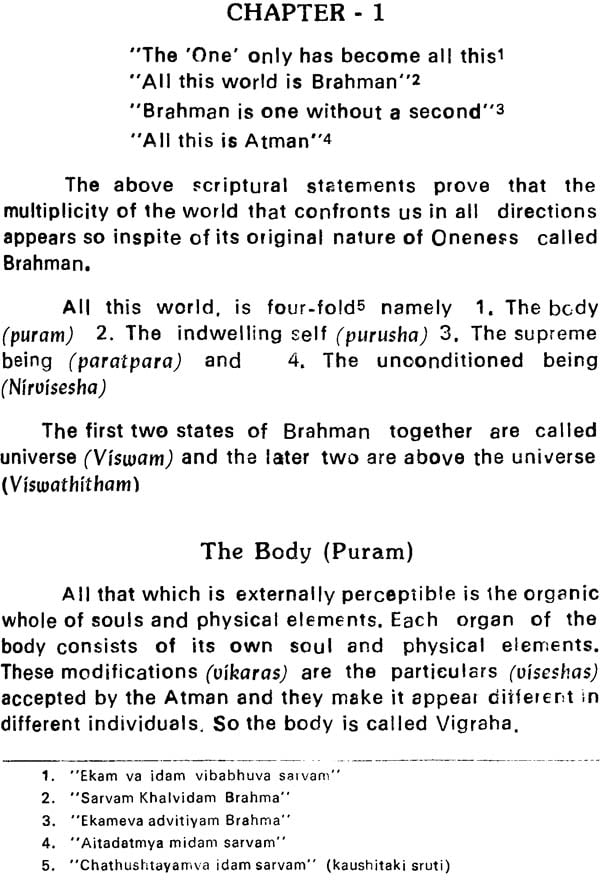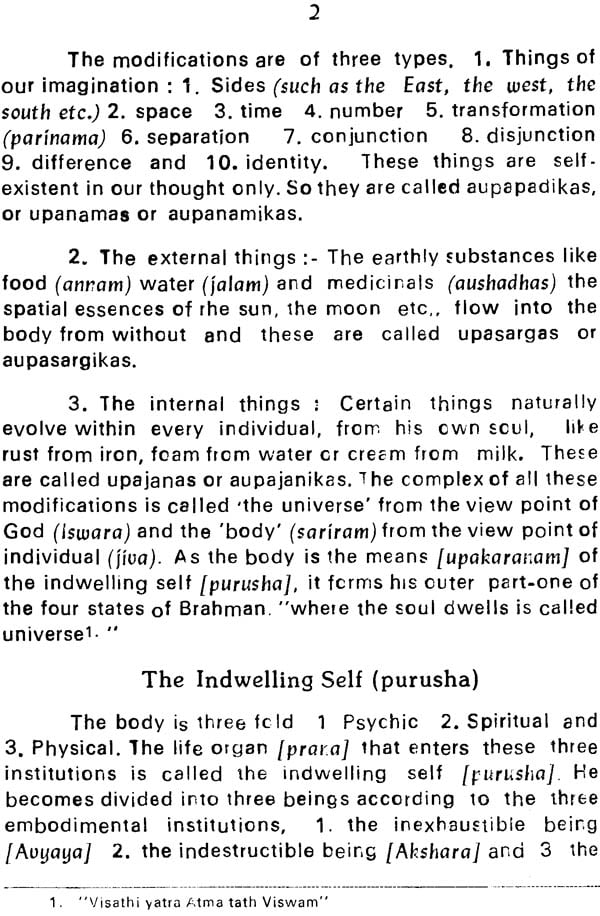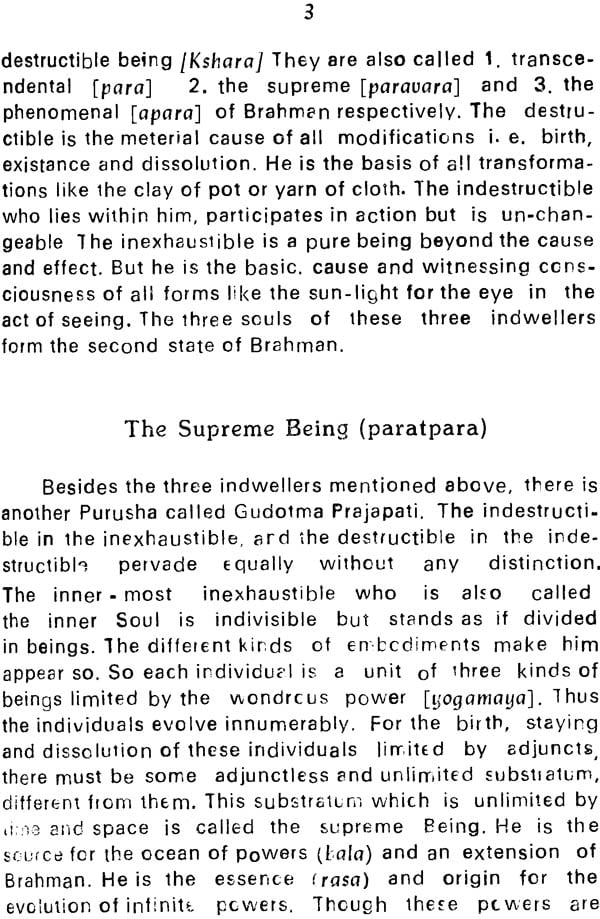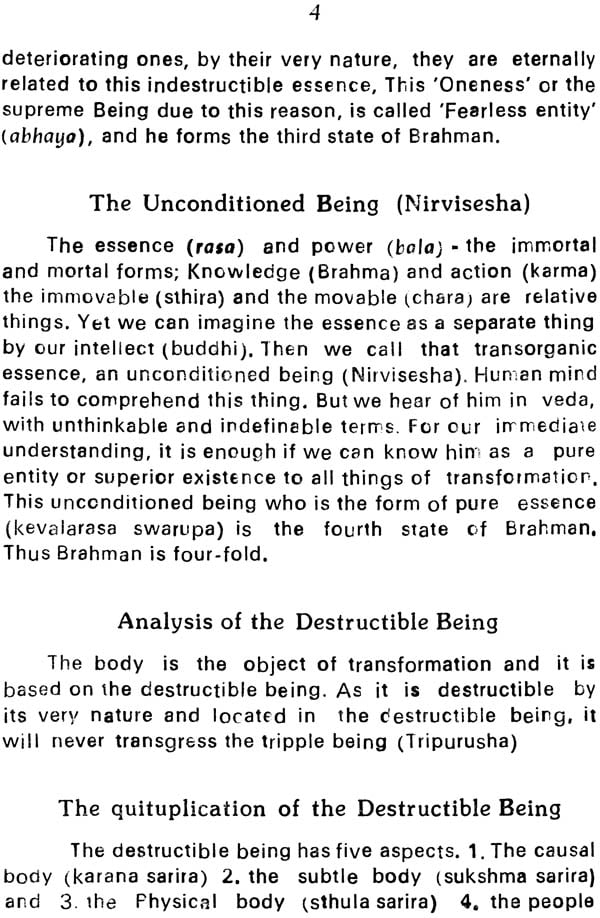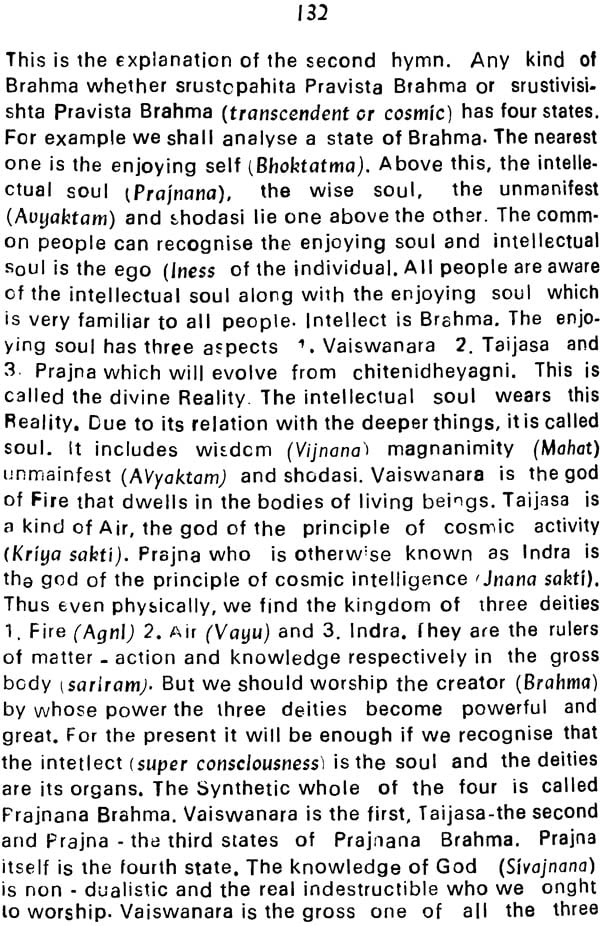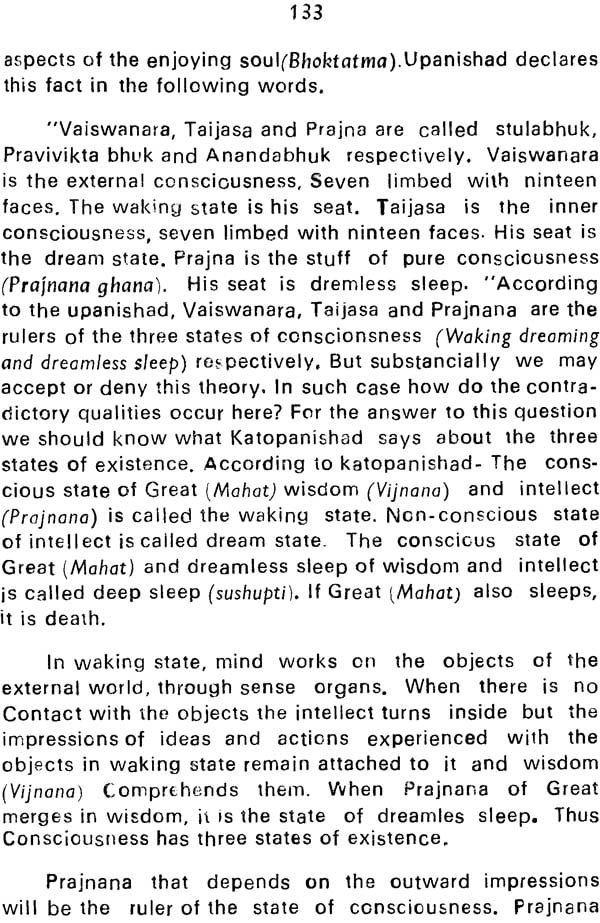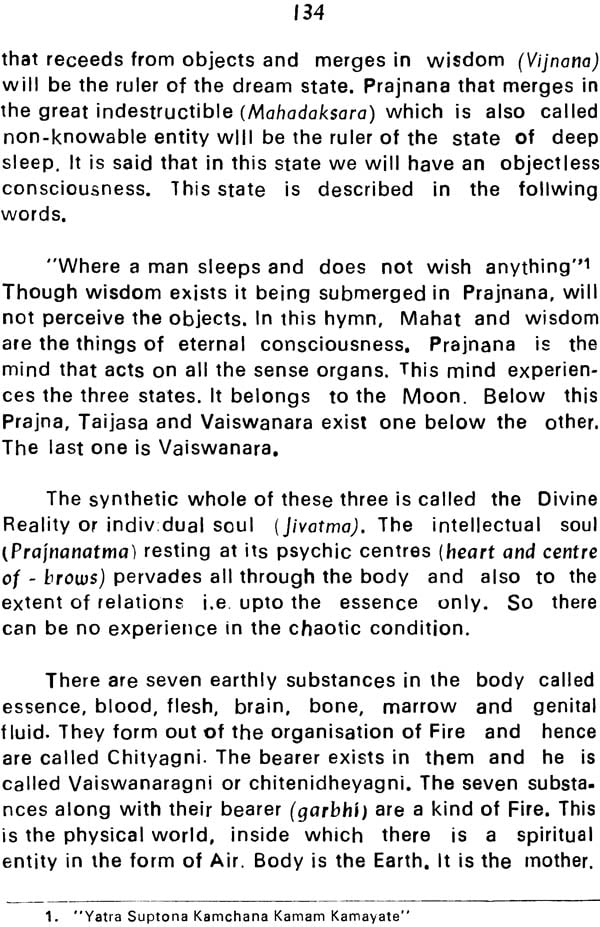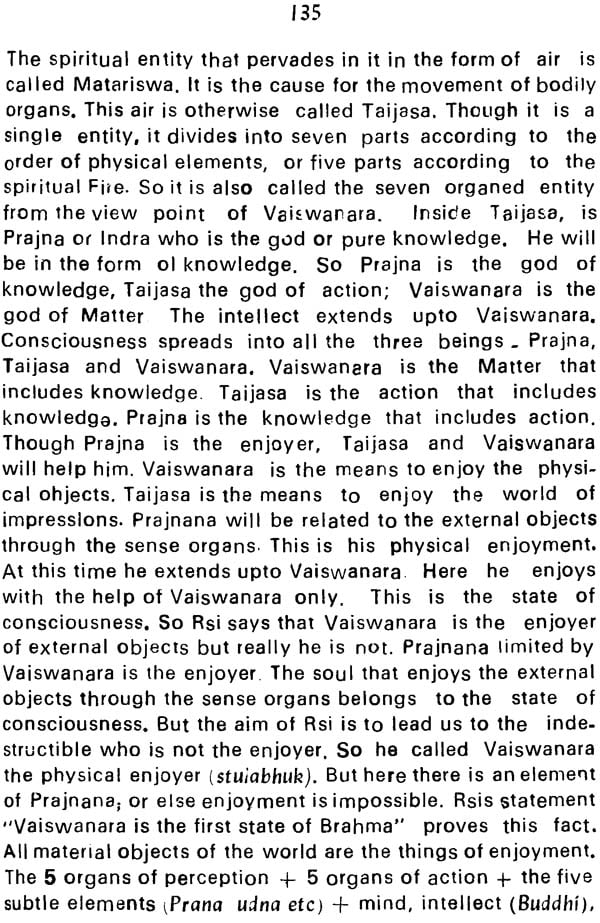
Srimad Brahma Vijnana Parichayam (An Introduction to the Knowledge of Creator) - A Rare Book
Book Specification
| Item Code: | NAG154 |
| Author: | Anusruta Vaijnanika |
| Publisher: | Tirumala Tirupati Devasthanams, Tirupati |
| Language: | English |
| Edition: | 1993 |
| Pages: | 161 |
| Cover: | Paperback |
| Other Details | 8.5 inch X 5.5 inch |
| Weight | 160 gm |
Book Description
All people know the four faced Brahman of our Epics, but not the one propounded by veda, who is One without a second’, “One who has become all this world” or “By whose grace and knowledge every thing is known” The knowledge of this four phased Brahman has been focused by the vedic seers and it is Superior to any other kind of knowledge ultimately veda itself is Brahman. It is the basis for tha expansion of Indian Epics. The entity of Brahman is infinite knowledge, infinite power, and infinite substance. The aim of veda is to make the individual who is finite realise his infinite nature and become one with the Brahman, Those who really wish to come out of the bondage of the universe must necessarily turn to this knowledge of Brahman, and there is no other way. Noble utterances of the great will lead us to experience the eternal bliss. This book belongs to this category.
This book “Brahma Vijnana Parichayam” deals with Various aspects like-creation; different kinds of souls; retreat of soul; physical spiritual and causal bodies; re-birth, knowledge and action; etc. in nut shell that everyman should be acquainted with.
The intricate doubts what, when, how and why of the creation will automatically be solved with the knowledge of the creator (Brahman) To know how this world inspite of its nature of oneness (Brahman) appears different is the path of wisdom (Vijnana) and to know how this world of plurality is termed as single entity is the path of knowledge (Jnana). Both approaches are vividly shown in this book.
According to scriptures what all is there in the universe is in the individual and visa vis. The two facts “All this is fourfold Brahman” and “The Brahman is established in all everywhere” are harmonized in this book, The extent to which our present Science pierced, is only one of the four states of Brahman which is destructible and non-eternal. But above this there are three eternal states. How great is our vedic knowledge that dealt with them upto the unconditioned Being (nirvisesha)! If we know the eternal science of vedas we do not wonder at the achievements of material Science.
Non-dualism and Dualism are harmonized in the discussion of essence (Rasa) and power (bala) of the supreme Being and the unconditioned Being. Those who get acquaintance with the inner four sheathes i.e. spirit, mind, wisdom and bliss of the Inexhaustible Being will be able to enjoy the inner subtle worlds.
Knowledge of, the forms of the Destructible Being (Kshara). Indestructible Being (Askhara), and Inexhaustible Being (Avyaya); the action of Brahma, Vishnu, Indra, Agni and Soma; the levels of creation; Veda, Yajna, Praja, Loka and Dharmas will lead us to understand the process of evolution and dissolution of the cosmos. The form of the Cosmos is shown by analyzing its branches – the supreme world (swayambhu); the middle world (Parameshti); the Heaven (Surya); the Moon (Chandra) and the earth that depend upon the Inexhaustible Avyaya (Paroraja) for their existence.
By knowing various kinds of souls like santhatma, Mahanatma and the creation of physical. Subtle and causal bodies, we will be enlightened ourselves with our own true form. The authors criticism that Liberation is the release of soul from the organization of powers (bala chithi) is most authoritative. Generally people think. The soul in all the bodies is one and the same but the author points out different kinds of souls in the body and the variation of their rays. The last chapter deals with different forms of ‘Aum’ (Pranava) of Mandukyopanishad, the source of complete and perfect knowledge of Brahman.
All the facts that are essential to make the individual enter the vedic lore are dealt in this book. It is praiseworthy that the three modes of Brahman, physical, divine and spiritual are interwoven. The greatness of this book is that it acquaints us with the Vedic terminology. The work is very useful to understand the secret meaning of all sastras, Bhagavad Geeta and Epics.
| Chapter - I | ||
| 1 | The four - fold Brahman | 1 |
| 2 | Analysis of the destructible Being-Kshara | 4 |
| 3 | Analysis of the Indestructible Being-Akshara | 5 |
| 4 | Analysis of the In-exhaustible Being Avyaya | 15 |
| 5 | Isvara and Individual a contrast | 26 |
| 6 | Kinds of souls | 27 |
| 7 | The Transmigration of soul | 36 |
| 8 | Rudiments of the Inexhaustible Avyaya | 38 |
| 9 | Sheathes of the Inexhaustible Avyaya | 39 |
| 10 | Spiritual Interpretation of Tripple Beings | 40 |
| 11 | The Supreme Being (Paratpara) | 42 |
| 12 | The Unconditioned Being (Nirvisesha) | 45 |
| Chapter - II | ||
| 13 | The four - fold Brahman and Universe | 47 |
| 14 | The sixteen aspected shodasi | 59 |
| 15 | kinds of shodasi (Parameswara - Isvara- Jiva) | 65 |
| Chapter - III | ||
| 16 | Brahman and the world-The unconditioned Being | 83 |
| 17 | The Supreme Being (Paratpara) | 84 |
| 18 | The Tripple Being Prajapati | 85 |
| 19 | The Monism of the Inexhaustible Avyaya | 87 |
| 20 | Contrast between Avyaya and Paratpara | 90 |
| 21 | Avyaya - the bodyless and boundless entity | 92 |
| 22 | Identity of jeveswara and Parameswara | 93 |
| 23 | Distnction between individual self and Supreme self | 94 |
| 24 | The Indestructible Akshara | 95 |
| 25 | The Activities of Brahma, Vishnu and Indra | 99 |
| 26 | Creation of the Body | 104 |
| Chapter - IV | ||
| 27 | Physical Institution | 107 |
| Chapter - V | 117 | |
| 28 | Mandukyopanishad | 124 |
| 29 | The Five categories of Aum | 126 |
